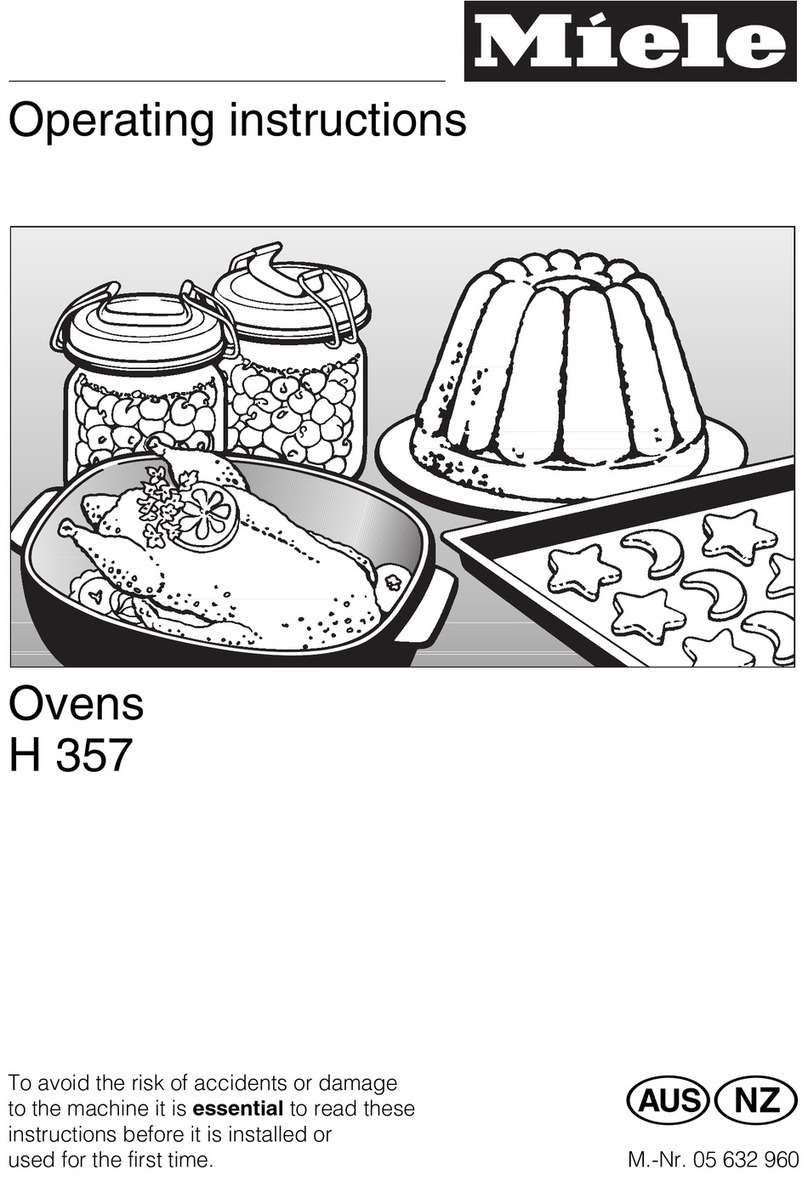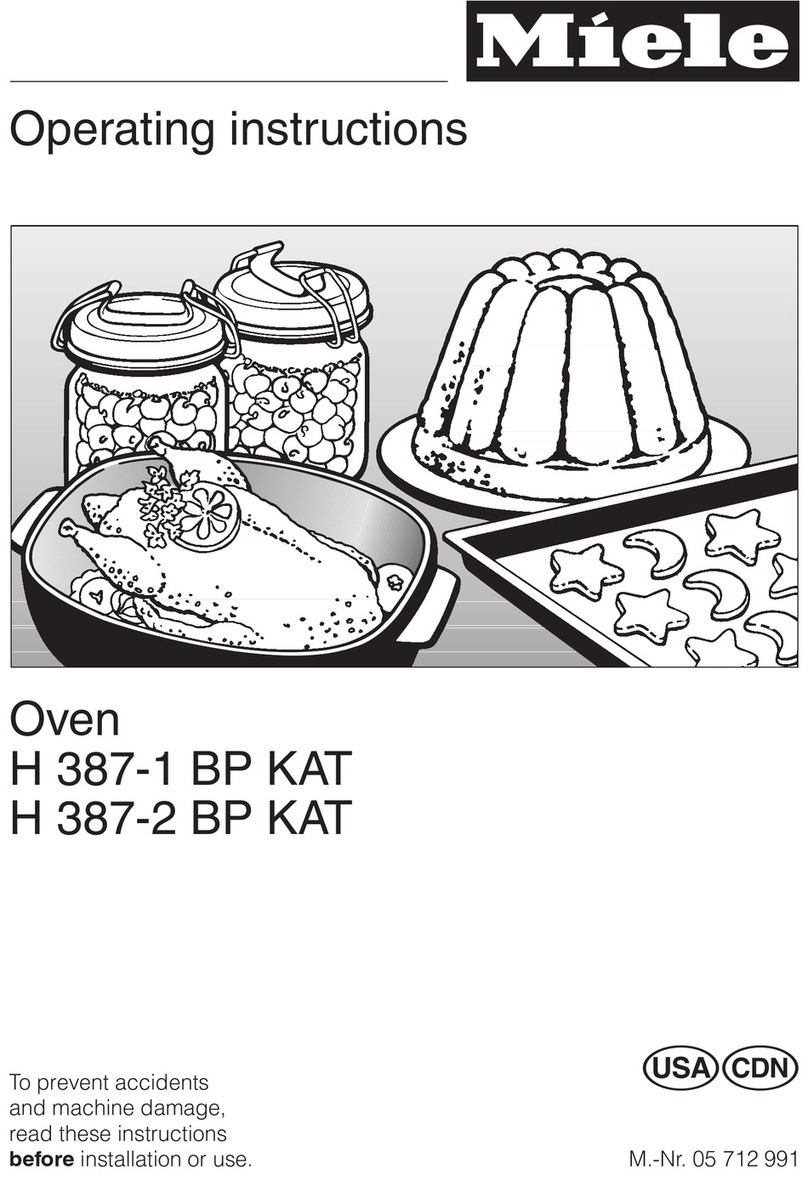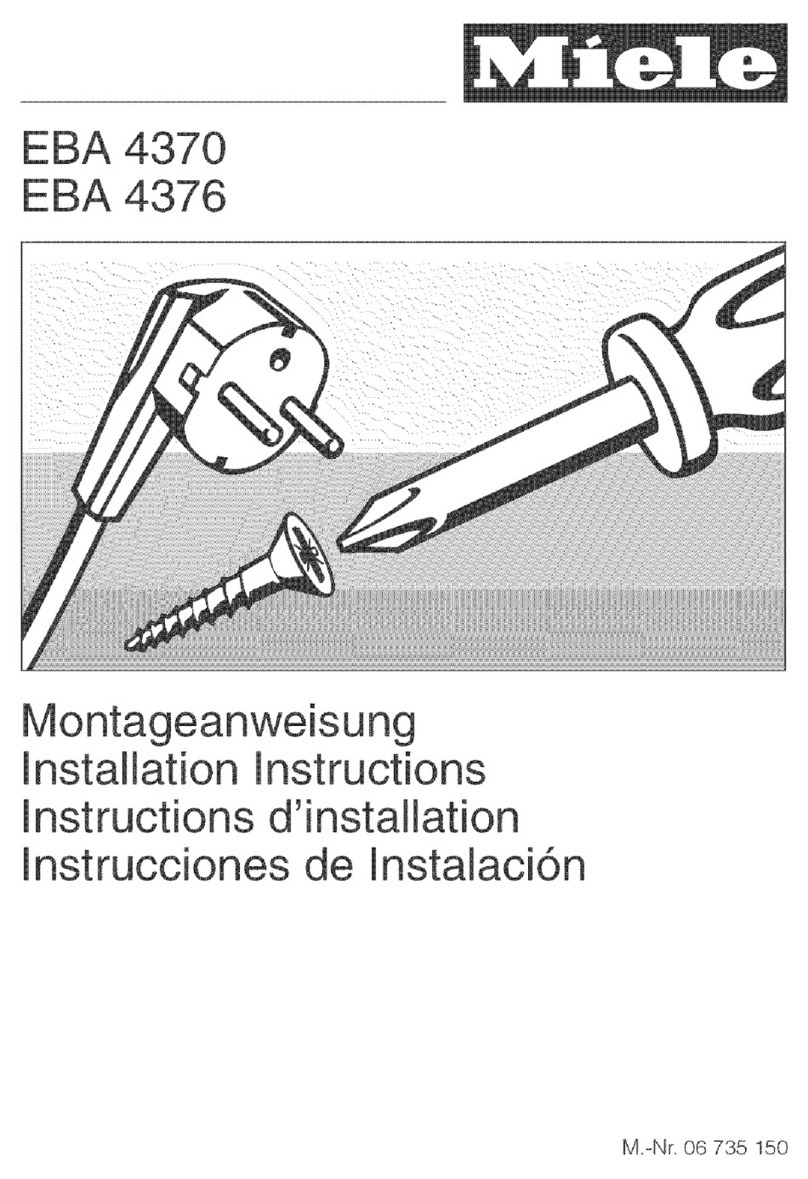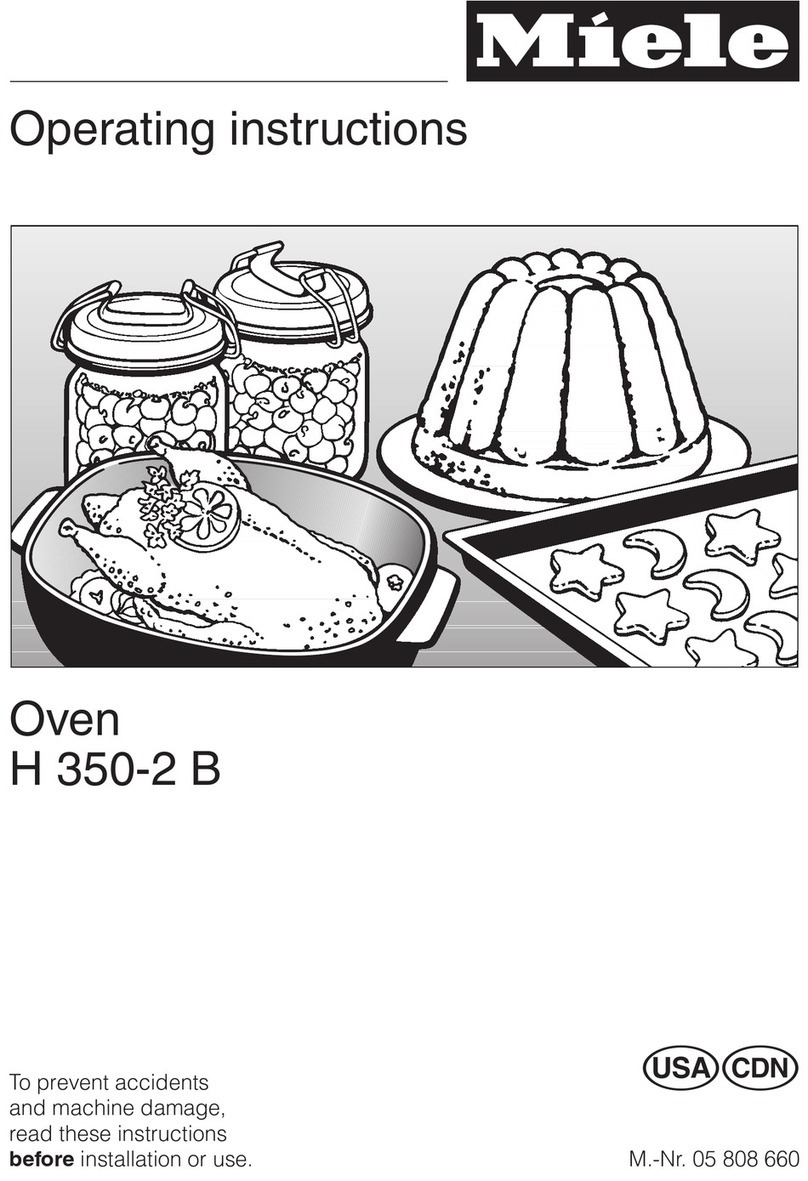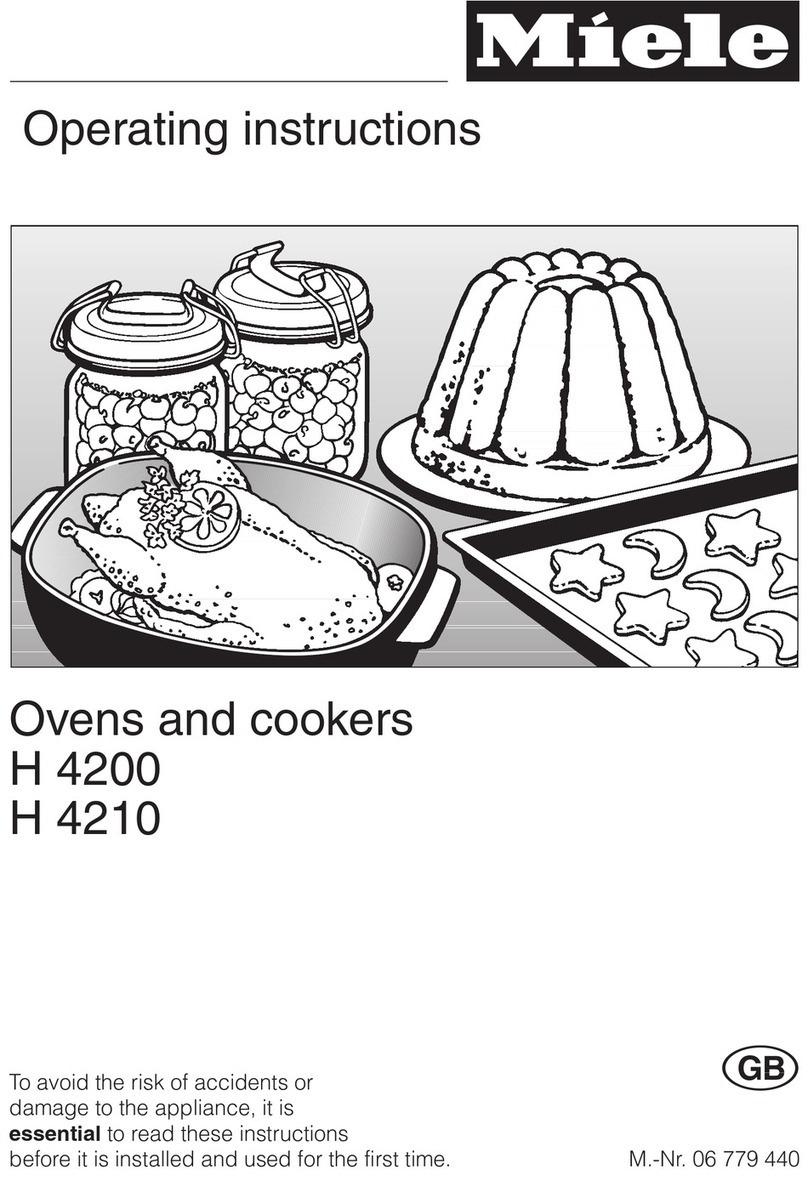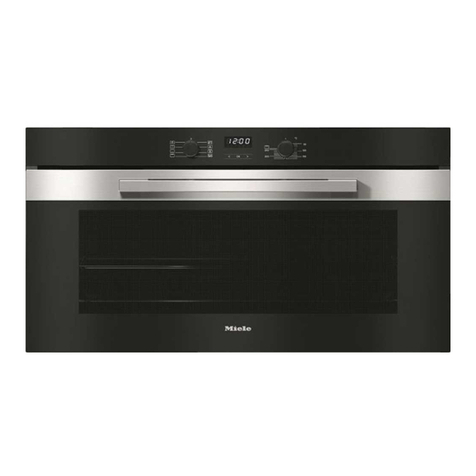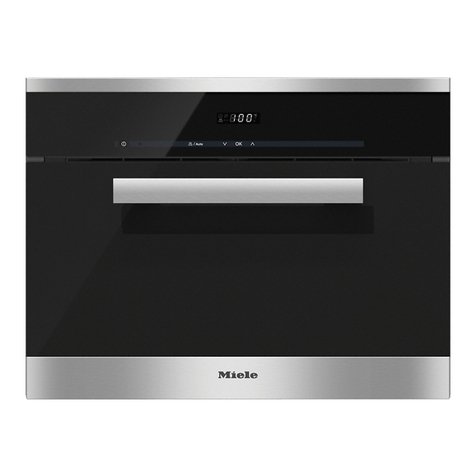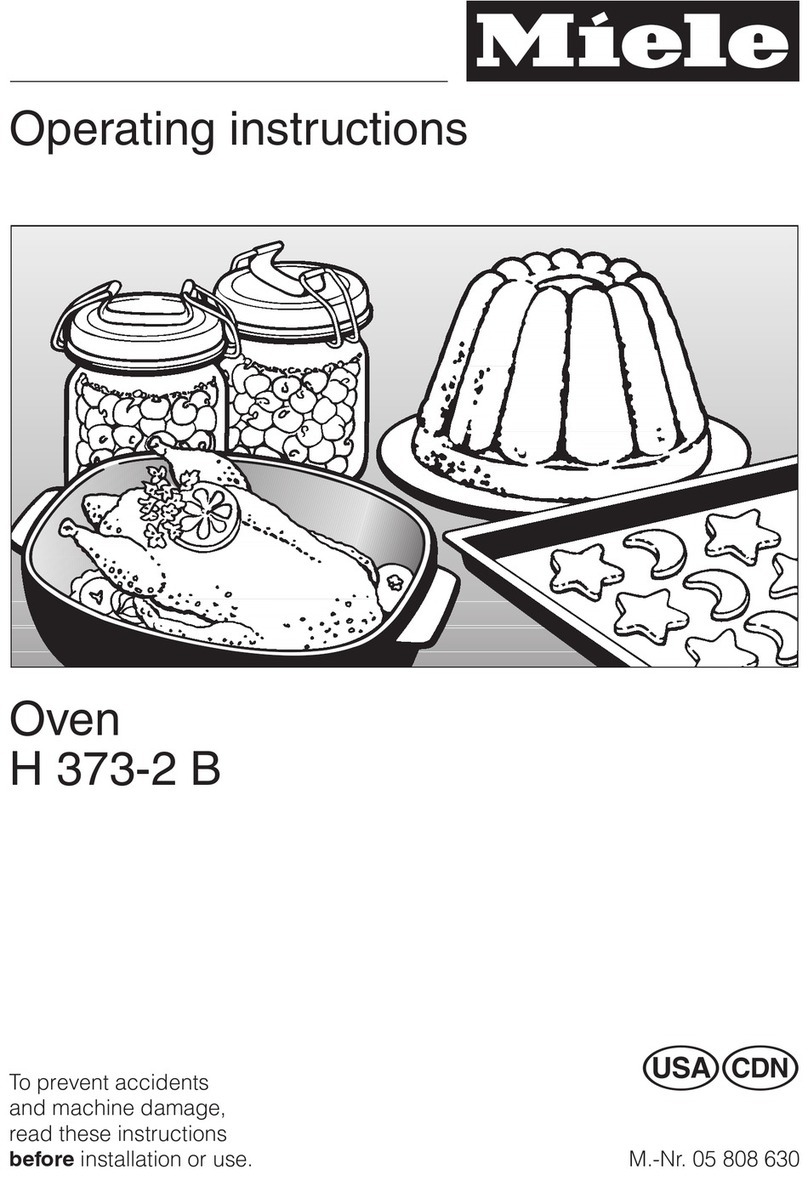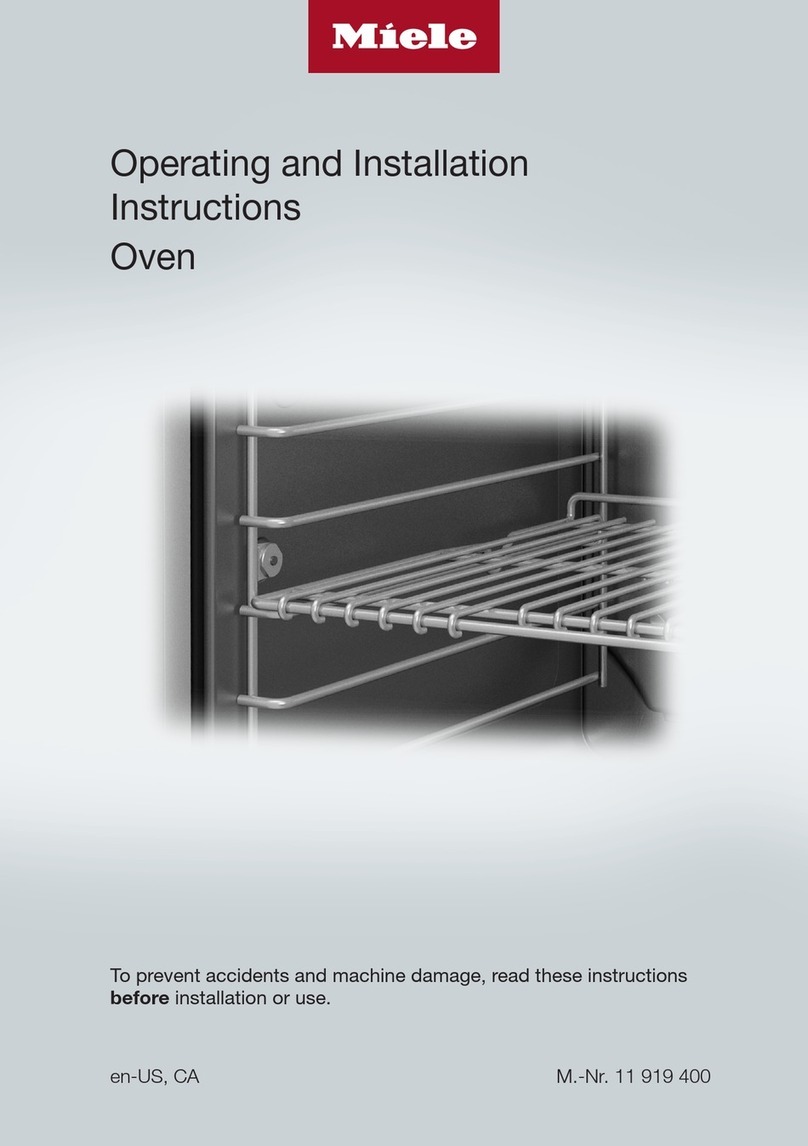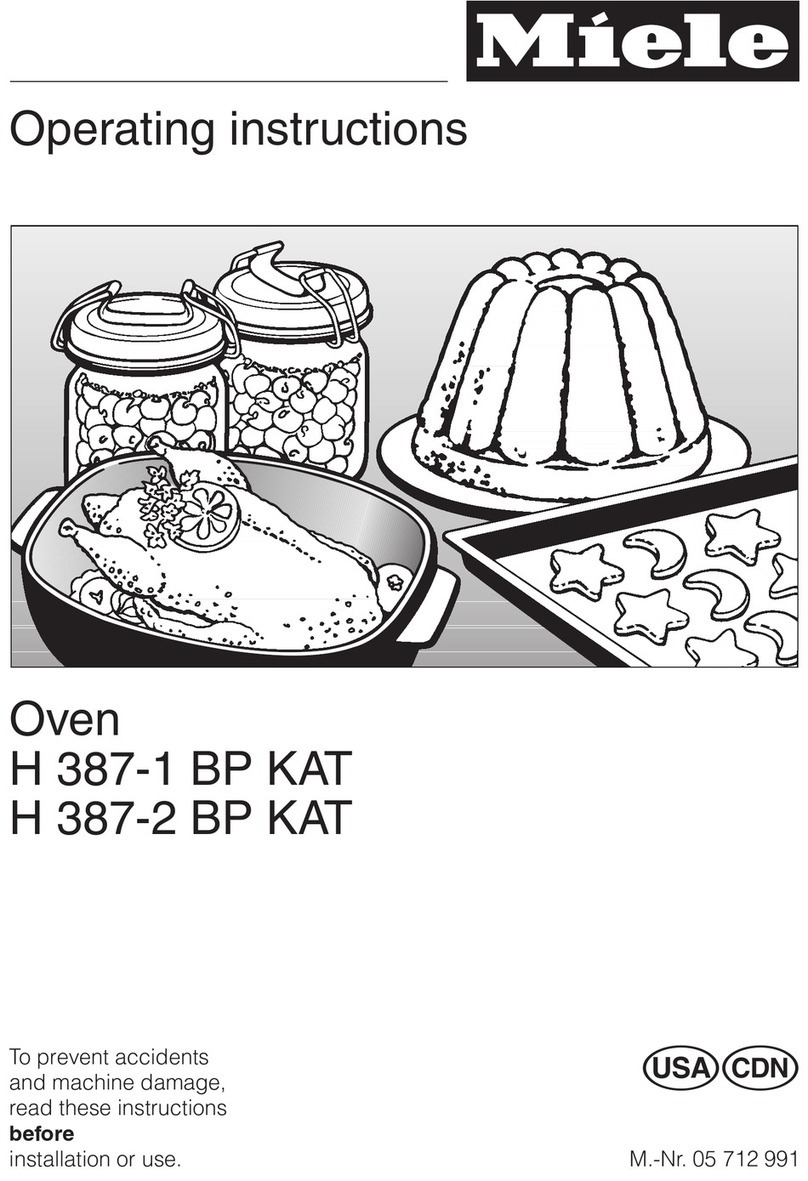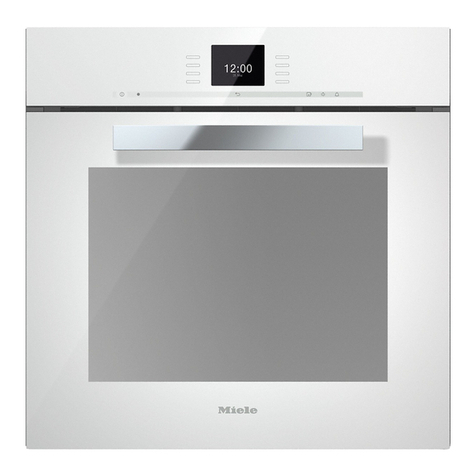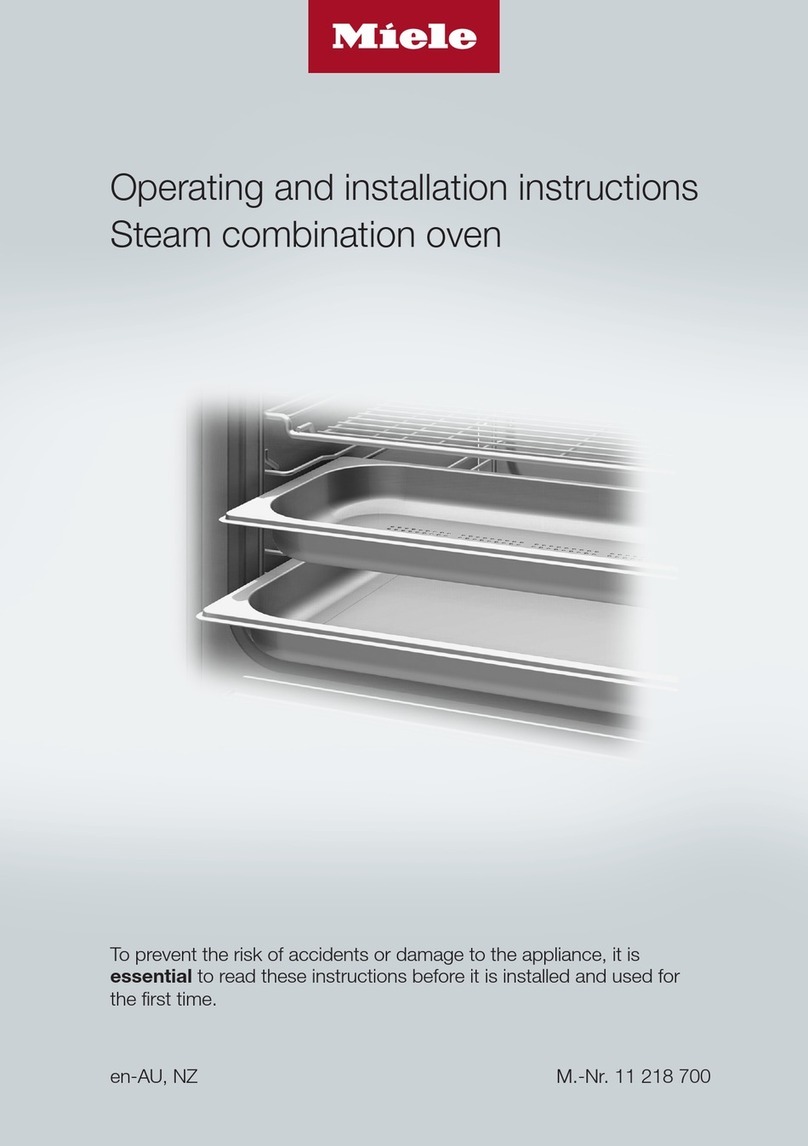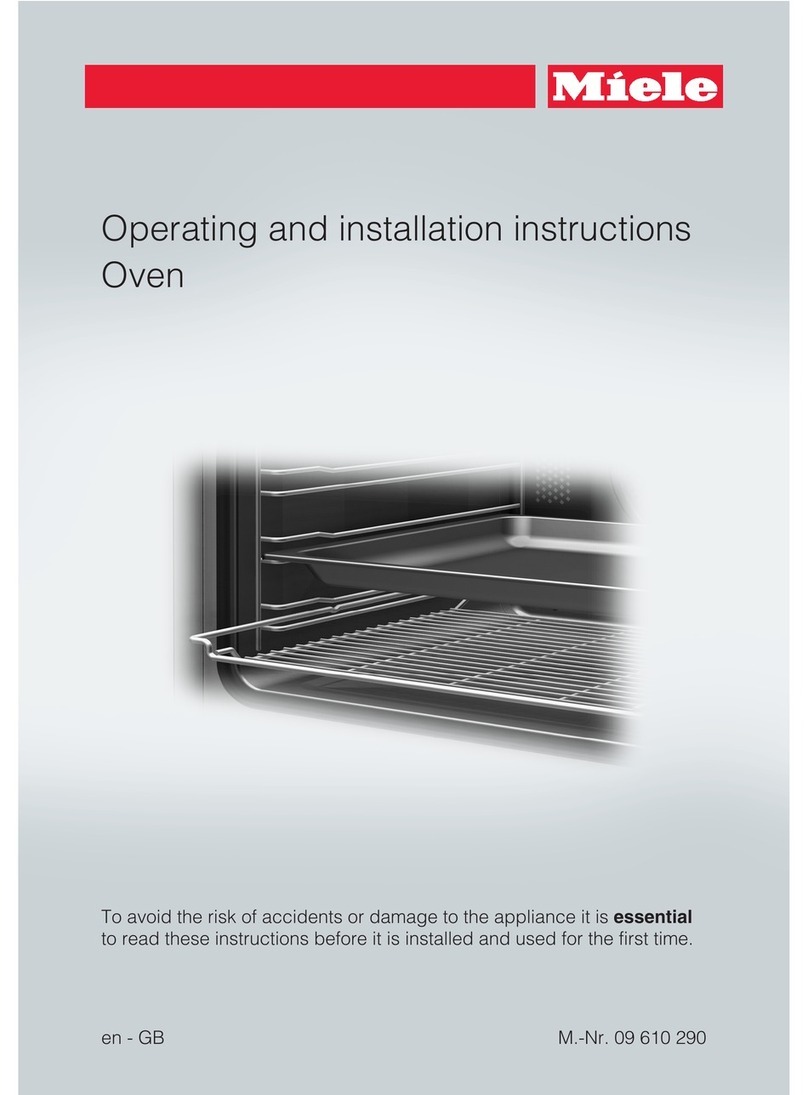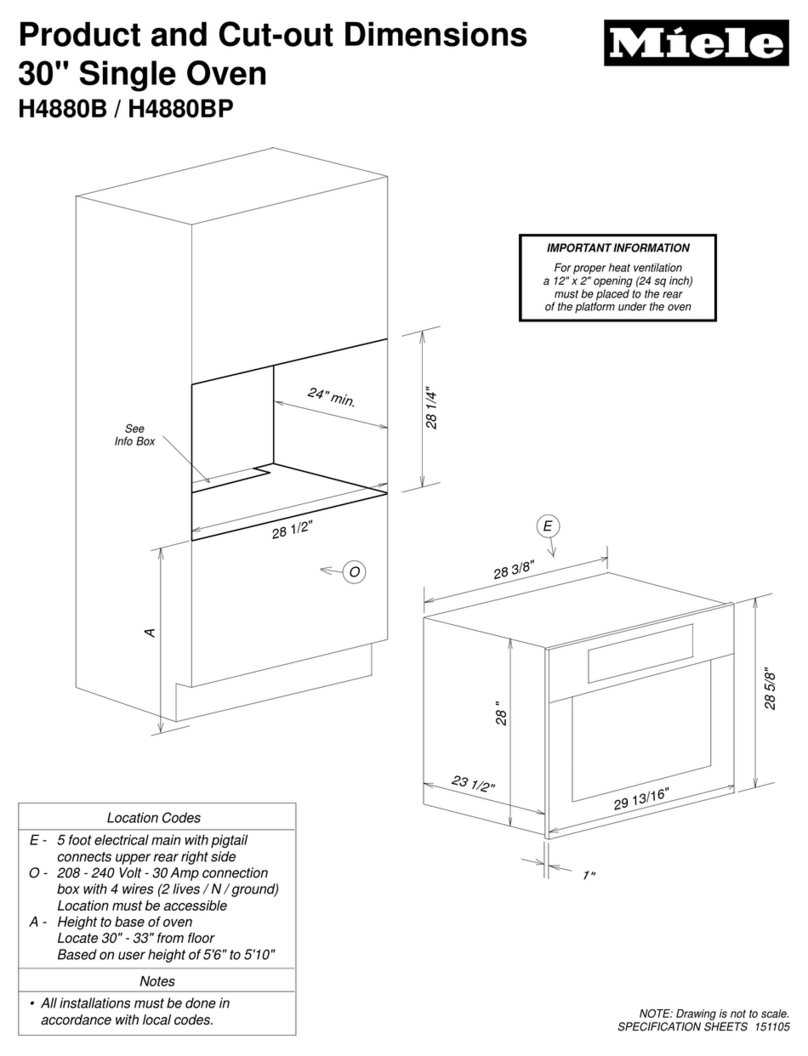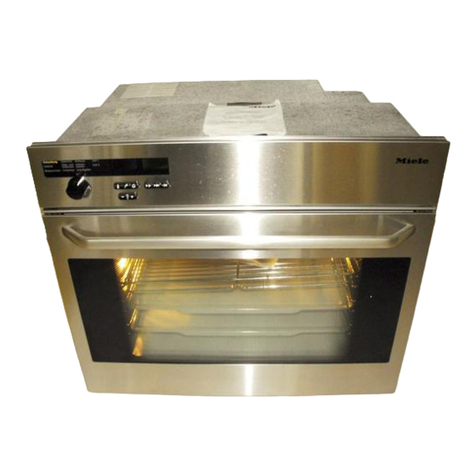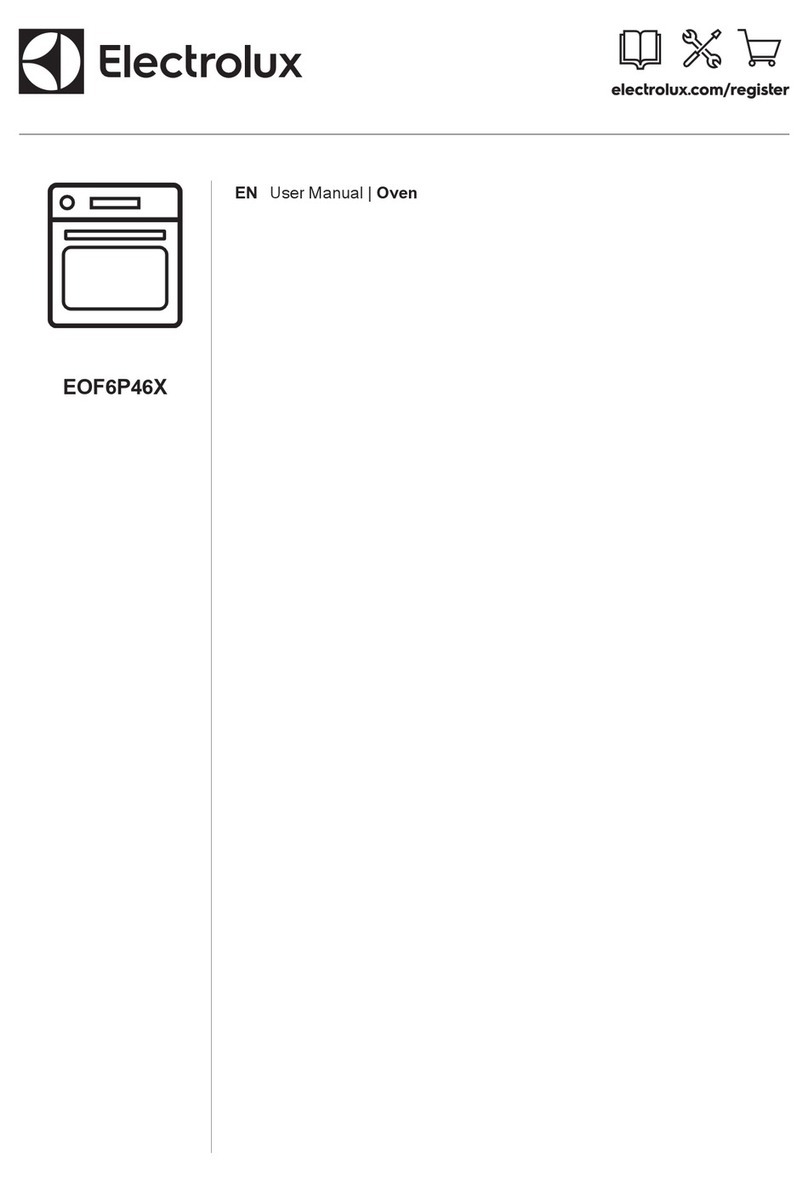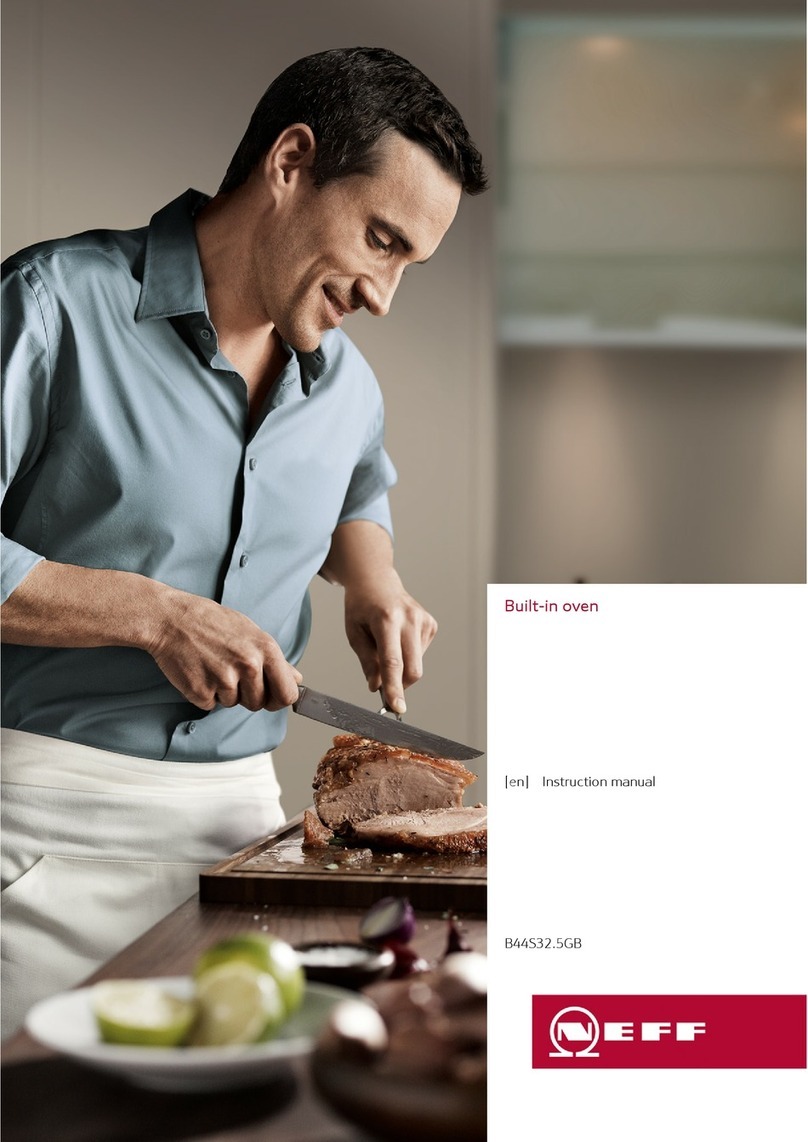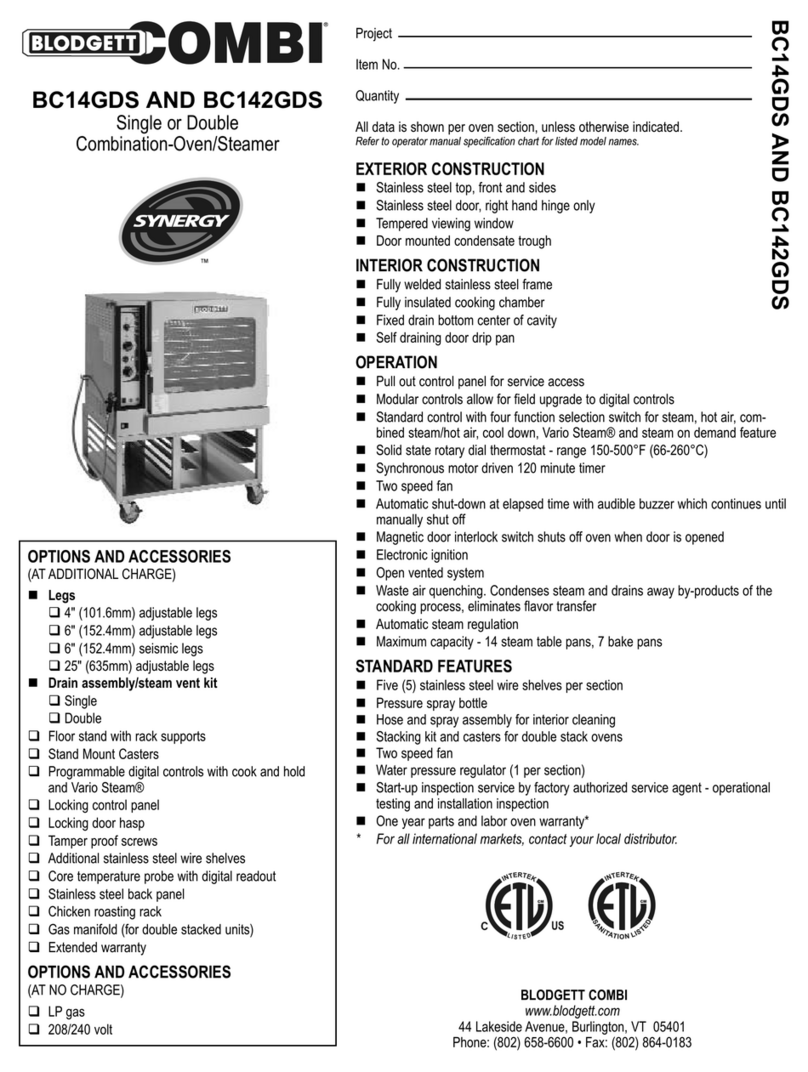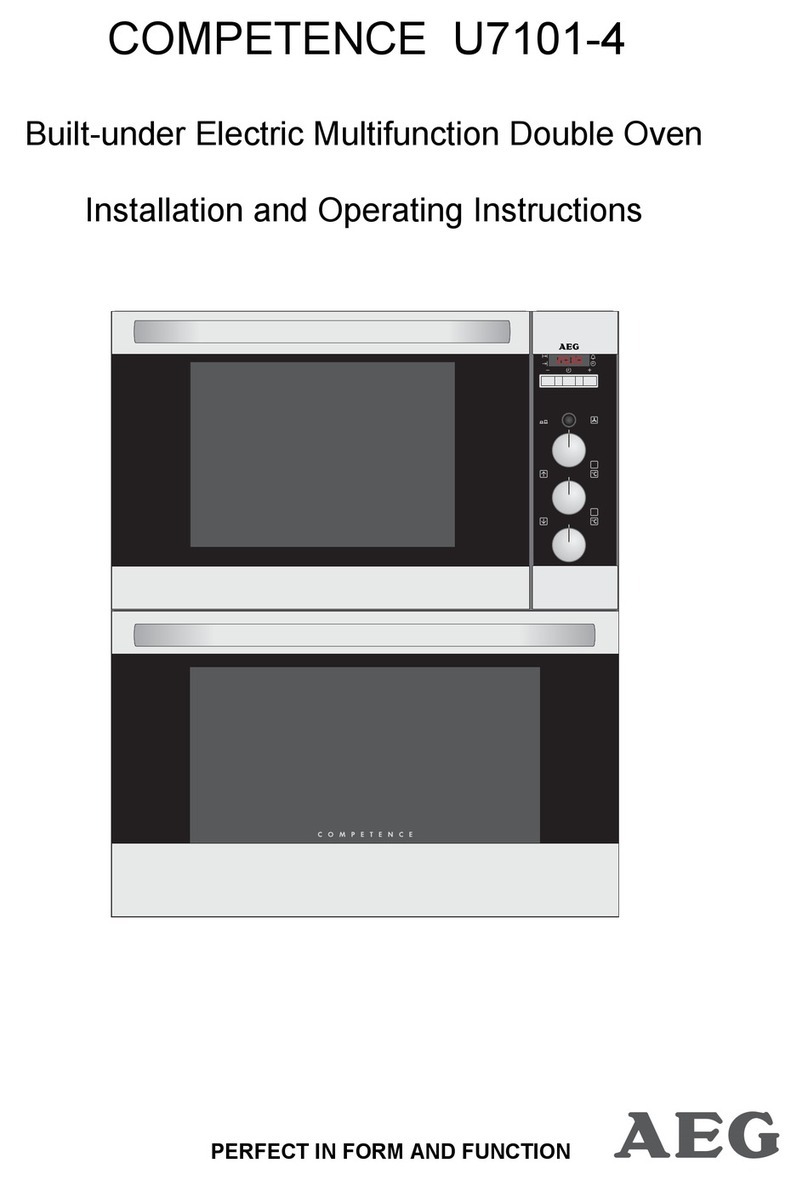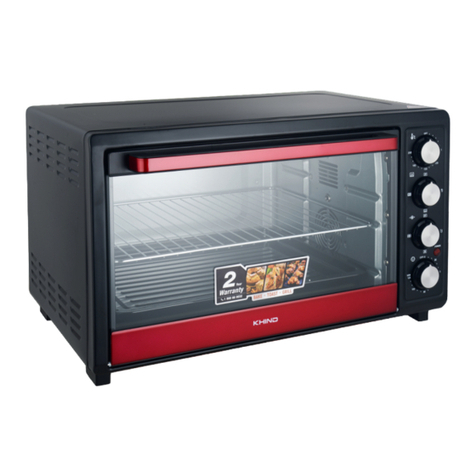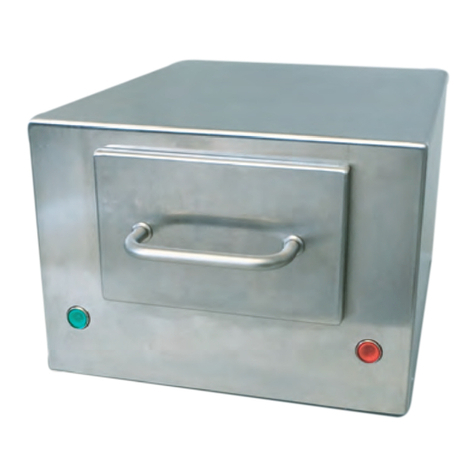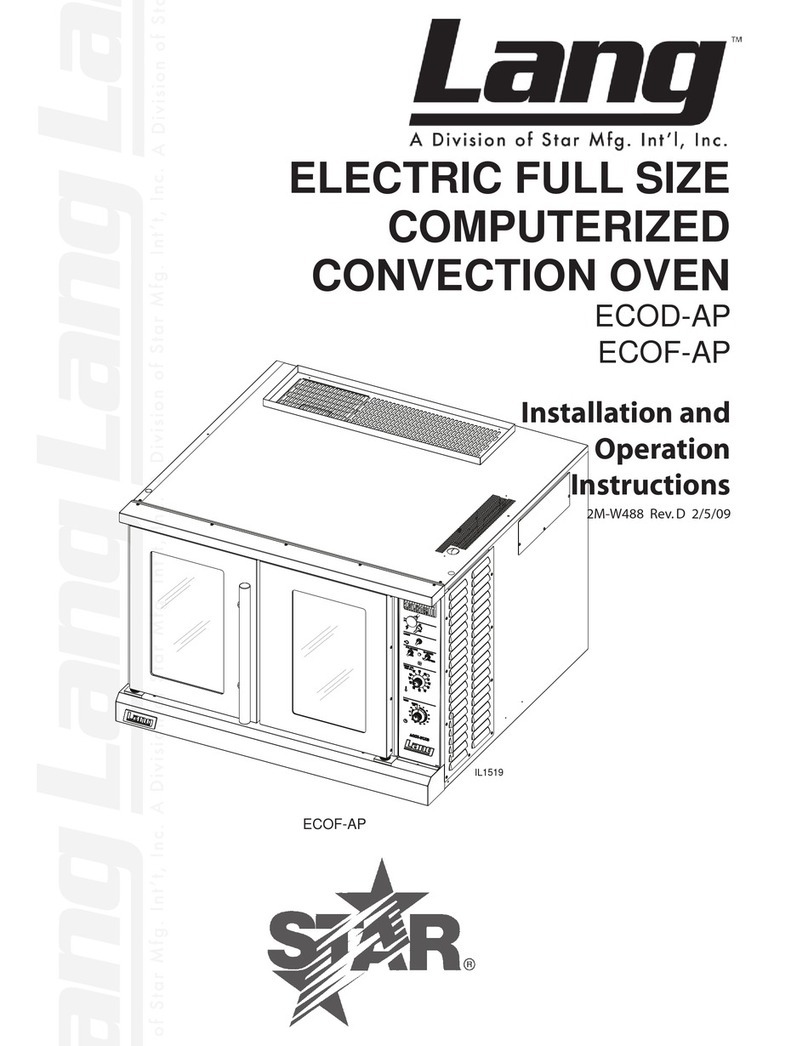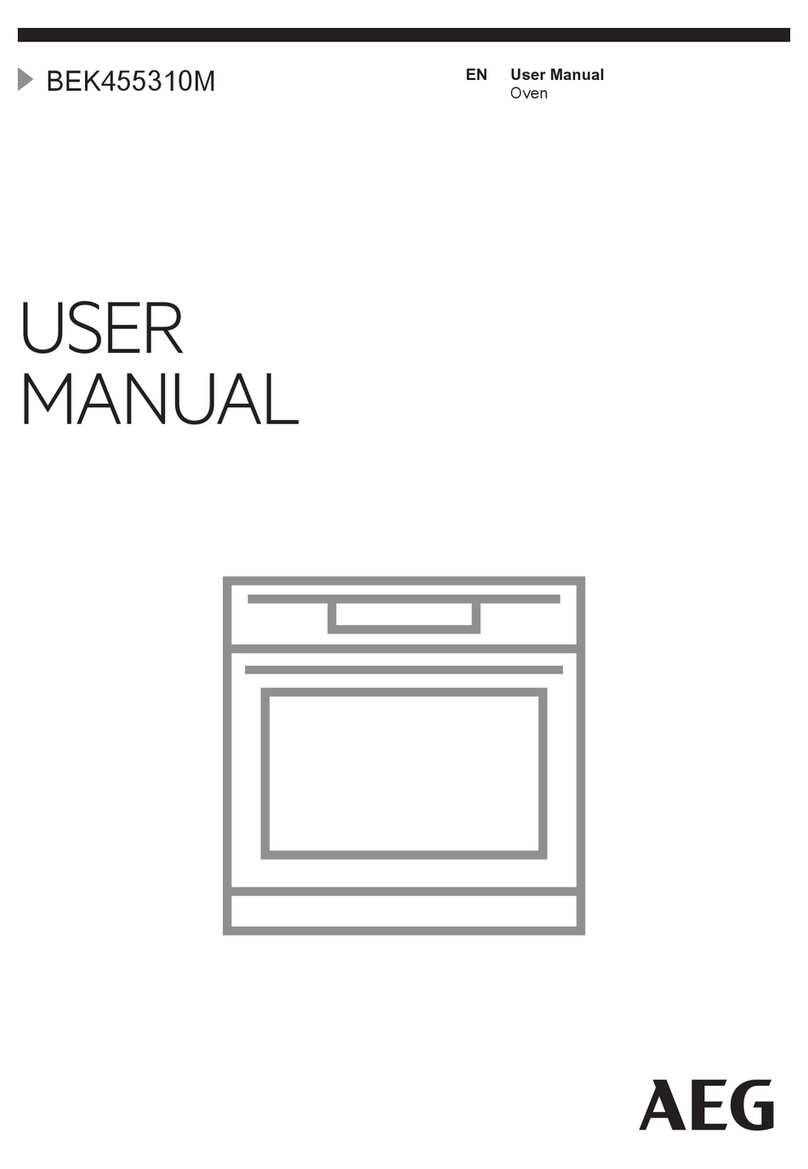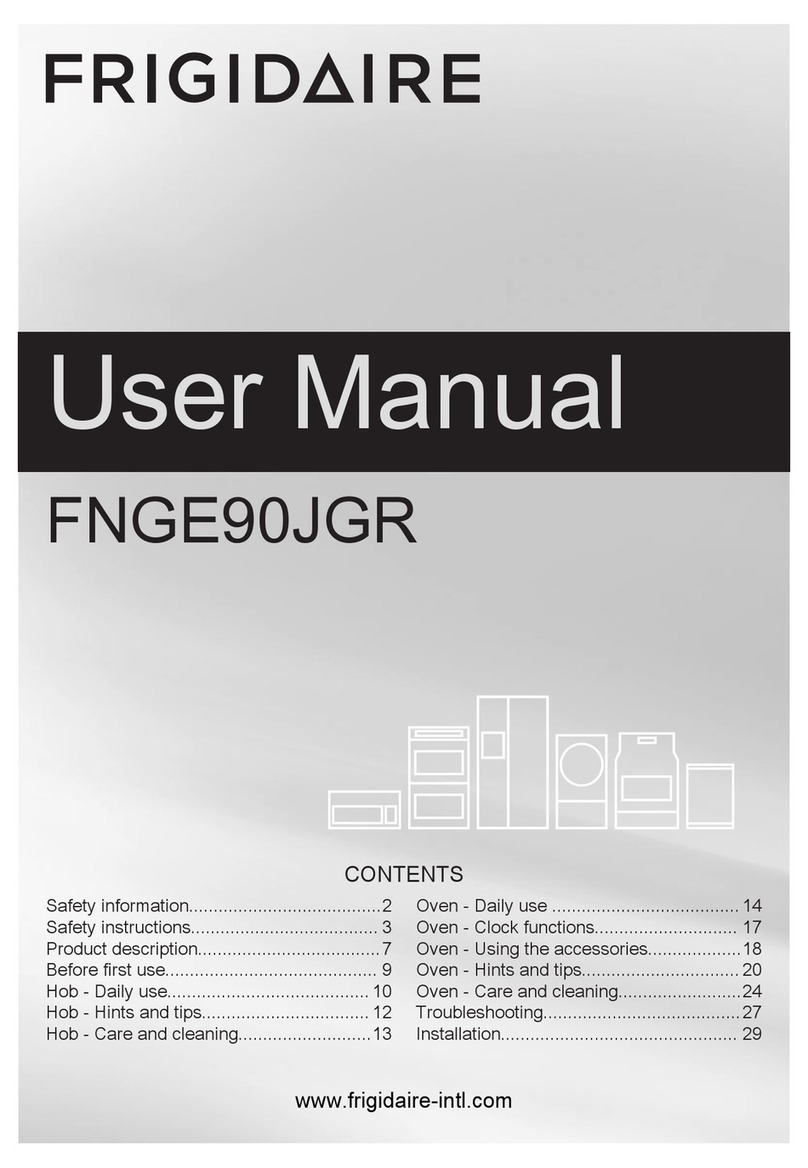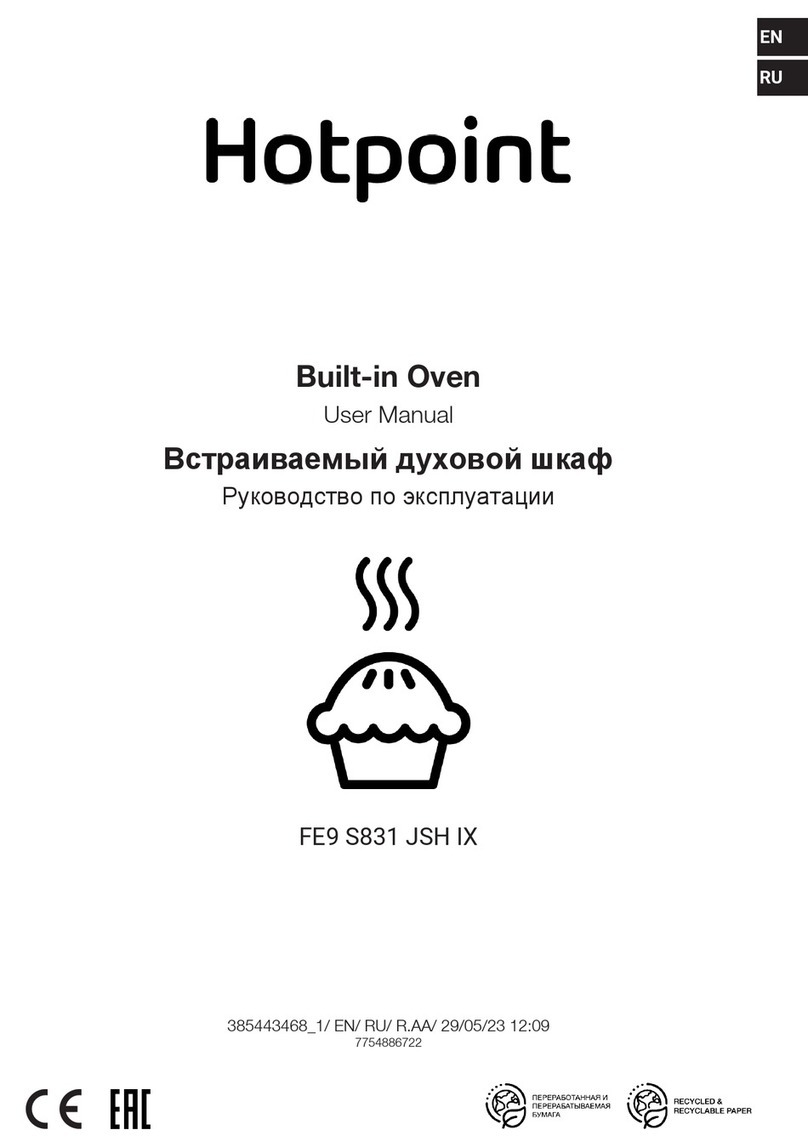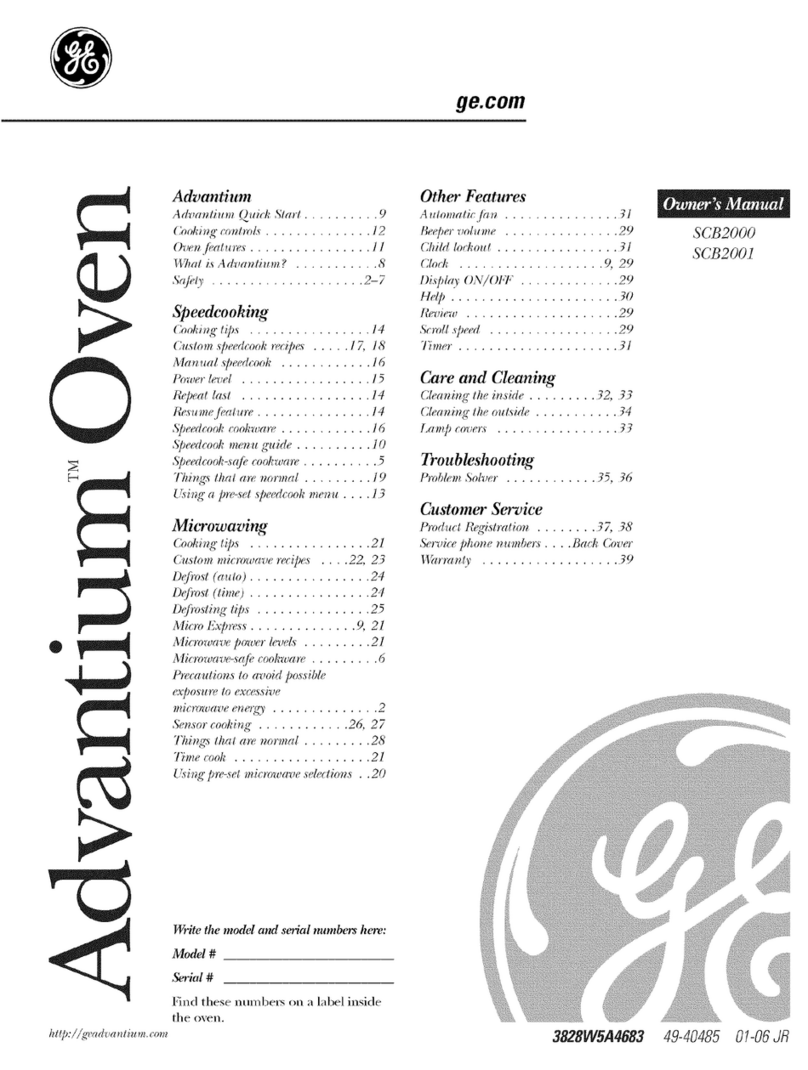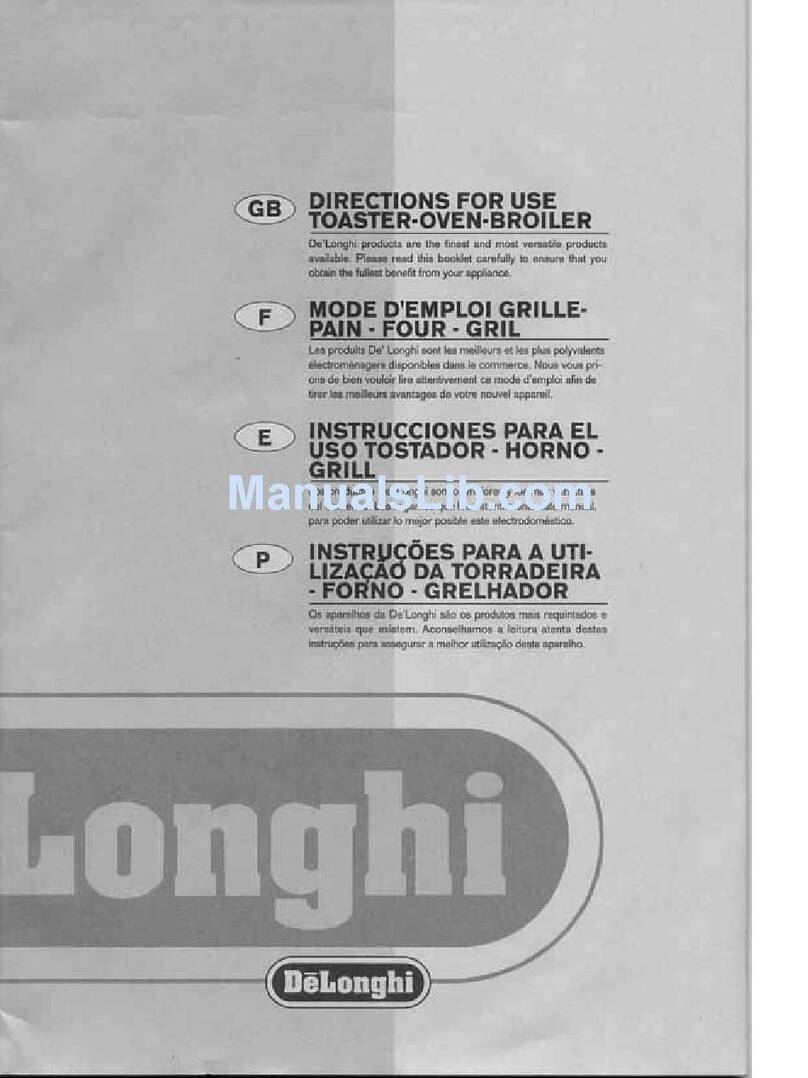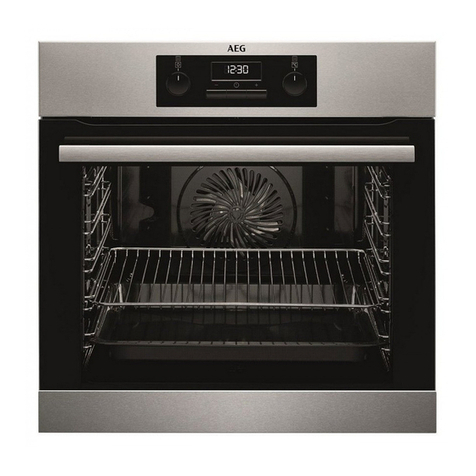Always ensure that food is suffi-
ciently cooked or reheated. Many
factors will affect the overall cooking
time, including the size and amount of
food, its temperature, changes to the
recipe and the shape and size of cook-
ing container. Some foods may contain
micro organisms which are only de-
stroyed by thorough cooking, therefore
when cooking or reheating foods, e.g.
poultry, it is particularly important that
food is fully cooked through. If in doubt
select a longer cooking or reheating
time.
It is important that the heat is allowed
to spread evenly throughout the food
being cooked.
This can be achieved by stirring and/or
turning the food, and by observing a
sufficiently long standing time, which
should be added to the time needed
for cooking, reheating or defrosting.
When using kitchen appliances
connected to sockets near the
oven, ensure that the cable cannot get
trapped in a hot oven door, which
could melt the cable insulation and be
dangerous.
Danger of electric shock.
Using alcohol in your recipes
Often alcoholic drinks such as
rum, cognac, wine etc. are used when
preparing dishes and oven-cooking
them. The high temperatures can
cause the alcohol to separate out.
Please take note that under adverse cir-
cumstances the alcohol can catch light
on the hot elements.
In countries which may be subject
to infestation by cockroaches or
other vermin, pay particular attention to
keeping the appliance and its surround-
ings in a clean condition at all times.
Any damage which might be caused
by cockroaches or other vermin will not
be covered by the appliance guarantee.
Disposal of your old machine
Before discarding an old machine
switch off and disconnect it from
the power supply. This should be done
by a competent person. Cut off and
render any plug useless.
Cut off the cable directly behind the
machine to prevent misuse.
The manufacturer cannot be held
liable for damage caused by non-
compliance with safety instructions.
Warning and Safety instructions
10
